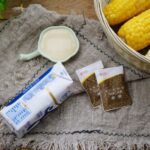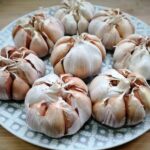Milk has become an indispensable part of many family meals, with experts recommending that children consume about 300 ml of milk daily.
However, with the increasing variety of milk products on the market, parents may feel confused about which type to choose to ensure their children’s nutrition and health.
According to a survey by the Chinese Nutrition Society, there are three types of “fake milk” that have been blacklisted. Pediatricians warn that these three types, which may seem nutritious, can potentially cause harm and should be limited in children’s diets.

3 types of “fake milk” to limit in children’s diets
Bubble Tea
Bubble tea often contains high amounts of sugar, which can lead to obesity and other health issues. Children can easily consume excess sugar, exceeding the recommended daily intake and posing health risks.
Many bubble tea varieties use tea that contains caffeine. Caffeine can cause insomnia and affect the development of the nervous system in young children.
Bubble tea usually does not provide essential nutrients for growth and development. Instead, consuming these drinks can make children feel full, leading them to skip main meals.
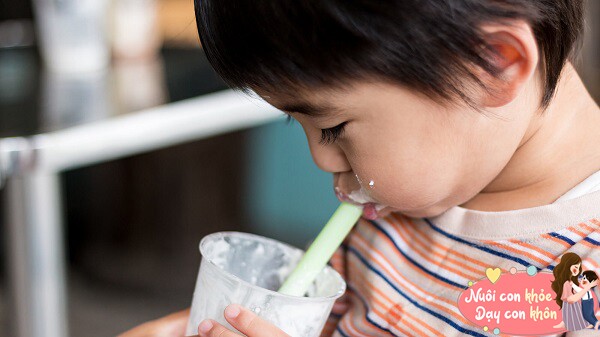
Bubble tea often contains high amounts of sugar.
Ingredients such as powdered tea, condensed milk, and toppings can cause digestive issues or allergies in some children. This is especially important for those with sensitive digestive systems.
While bubble tea may be tasty and appealing, regularly giving it to children is not a healthy choice. Instead, parents should encourage children to drink water, natural fruit juices, or fresh milk to ensure they receive the necessary nutrients.
Milk Candy
With their sweet and appealing flavor, milk candies can easily attract children’s attention. However, the concern is that the content of pure milk and calcium in these candies is typically very low, only constituting a small fraction.
Instead, milk candies contain high amounts of sugar, and regular consumption can increase the risk of dental problems such as tooth decay and gum inflammation. This is because bacteria in the mouth ferment the sugar, producing harmful acids that damage tooth enamel.
Additionally, excessive sugar intake can lead to obesity, as milk candies provide empty calories without sufficient essential nutrients. Children may feel full from consuming these candies, leading them to skip main meals, which can impact their overall growth and development.
Moreover, the habit of snacking on milk candies can create a dependence on sweet foods, making it difficult for children to accept healthier options like fruits and vegetables.

The content of pure milk and calcium in milk candies is typically very low.
Drinks Containing Lactic Acid Bacteria
Lactic acid is produced by fermenting milk.
Some drinks containing Lactobacilli may seem beneficial for health, but their main ingredients are often water, sugar, and food additives. If parents mistakenly believe that these lactic acid bacteria drinks can replace milk, they are inadvertently hindering their children’s healthy development. While the flavor of lactic acid bacteria drinks may appeal to children, their nutritional value is not high, so parents should choose wisely.

How to scientifically choose milk for children
With the diverse range of milk products available, how can parents make informed and rational choices for their children? Experts provide three basic criteria to help parents select a quality milk product for their kids.
Observe the color and smell of the milk
High-quality milk should have a creamy white color and a natural flavor. If the milk has a yellowish tint or a strong odor, it may indicate the presence of excessive chemical additives or artificial flavors.
When purchasing milk, parents can easily assess its quality by considering its appearance and smell. They should opt for milk with a natural color and a fresh aroma.
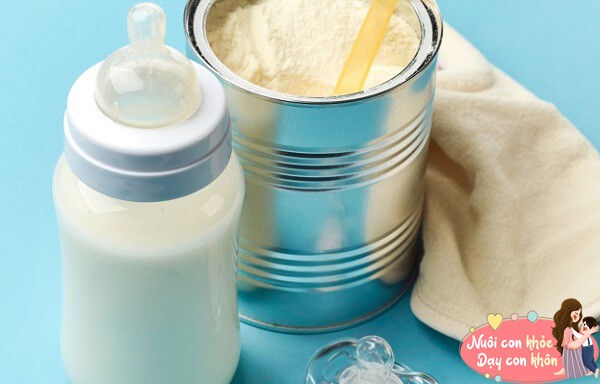
Observe the color and smell of the milk.
Carefully check the ingredient list
Parents should pay close attention to the ingredient list when choosing milk. If fresh milk is listed first in the ingredients and there are no other additives or preservatives, it is likely to be pure and nutrient-rich.
On the other hand, if the ingredient list contains a long list of additives beyond milk, it is best to limit its consumption.
Pay attention to the nutritional content
The core nutritional components of milk are protein and calcium. In some countries, regulations stipulate that pure milk must contain at least 2.9 grams of protein per 100 grams.
Therefore, parents can assess milk quality by checking the protein content. If the protein content is less than 2.9 grams, the product does not offer high nutritional value. Pure milk usually has a higher protein content, better meeting the growth needs of children.
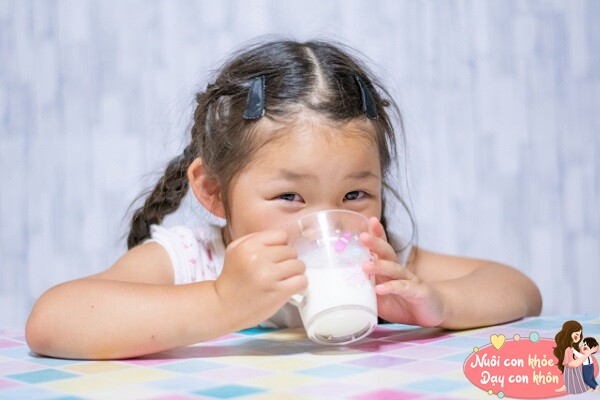
Pay attention to the nutritional content.
Limit milk with high white sugar content
Consuming excessive sugar is detrimental to children’s health. White sugar does not provide protein or calcium and can deplete vitamins and minerals in the body, negatively affecting bone development and other essential physiological processes.
When children consume too much sugar, their bodies require more vitamins and minerals to metabolize and process the excess sugar, leading to nutritional deficiencies.
Moreover, regular sugar intake can have adverse effects on oral health. Sugar provides an ideal environment for bacteria to thrive in the mouth, contributing to the production of harmful acids that damage tooth enamel.
The Magic of Milk: 8 Surprising Ways Milk Can Transform Your Garden
Introducing 8 Miraculous Uses of Milk in Gardening: A Nature Lover’s Guide. Uncover the hidden powers of milk and its extraordinary benefits for your green thumb pursuits. From soil enrichment to pest control, milk reveals its versatile prowess in the garden. Prepare to be captivated as we unveil the secrets to a thriving, milk-empowered garden paradise.
The Ultimate Guide to Corn Boiling: Unlocking the Secret to Plump and Delicious Kernels
“Did you know that this drink can also work wonders on boiled corn? It adds a delightful sweetness and a juicy, plump texture, taking your regular corn on the cob to the next level. Imagine biting into corn that’s not only tasty but also bursting with flavor and a delightful aroma. It’s a game-changer for sure!”
“Garlic Breath: The Stinky Truth and an Easy Fix”
Introducing the ultimate solution to eliminate unpleasant odors after indulging in this spicy root: a trio of dairy, citrus, and green tea. A refreshing glass of milk, the tangy delight of grapefruit, or the antioxidant-rich power of green tea can neutralize any lingering scents, ensuring a pleasant dining experience.
An Unexpected Joy on Opening Day: A Gift for Disadvantaged Students in Ben Tre Province
On the joyous occasion of the ‘National Back to School Festival’ on September 5, 2024, Vinamilk, the Vietnam Dairy Products Joint Stock Company, in collaboration with the Vietnam Children’s Fund, distributed nearly 200,000 boxes of fresh milk to students as part of their 2024 plans for the ‘Vietnamese Growing Milk Fund’ program. To mark this special day, a unique opening ceremony was held for students in Ba Tri district, Ben Tre province, as a meaningful gift to welcome them back to school for the new academic year.





























